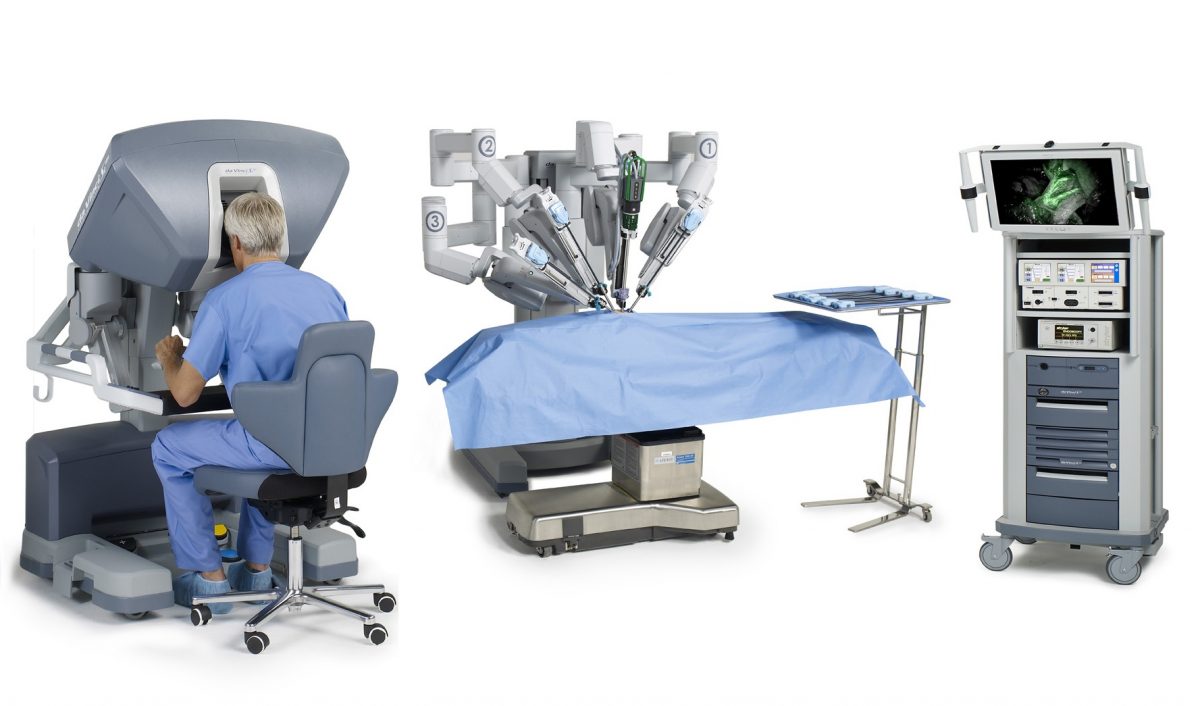If you could choose between a robotic assisted surgery or a traditional surgery performed by humans, most people would argue for the traditional one. It feels unnatural and scary to involve AI, VR, and augmented reality in such a secure process. Robotic surgery has however, a lot of benefits. Although this technology is still in its early stages, in some cases robot assisted (RA) surgery is already used. The technique used is the so called Minimally Invasive Surgery (MIS). MIS is essentially a new way of operating from a distance with the use of robots, where only a small incision is needed to perform a surgery (Diana & Marescaux, 2015). The surgeon is seated at a console where he can see an augmented 3D-model of the patient and control the micro instruments accordingly (Abbas, 2019). Although robotic surgery is currently expensive to implement and not compatible to every surgery, in the near future it can provide many opportunities.

One of these opportunities is that RA surgery, in contrast to open surgery performed by humans only, reduces the chance of complications because it enhances the dexterity and precision of the surgeon (Diana & Marescaux, 2015). This also results in less blood loss and less chance of infection. In addition, robot surgery can be favorable for patients, because it is proven that they have less pain and have a faster recovery time (Diana & Marescaux, 2015). Patients also have less damage on the surface due to the smaller incisions that are needed (Abbas, 2019). For example, with MIS a heart surgery only needs four holes which can be placed between the ribs, whereas for the traditional procedure it was needed to crack open the chest to perform surgery on the heart (Abbas, 2019).
In conclusion, we saw that there are many benefits of using RA surgery and that it can play a big role in future healthcare, especially if the technologies of AI, VR and augmented reality keep developing. The downsides are that it is still very expensive, and it cannot be used for every procedure. If however you get the options between robotic assisted or traditional surgery, know that robotic assisted is not as scary and unnatural as it sounds.
Sources:
Abbas, H. (2019). Husain Abbas: Robots and artificial intelligence in the operating room [Video file]. Retrieved from
https://www.ted.com/talks/husain_abbas_robots_and_artificial_intelligence_in_the_operating_room
Diana, M., & Marescaux, J. (2015). Robotic surgery. British Journal of Surgery, 102(2), e15–e28. https://doi.org/10.1002/bjs.9711
more information on the future of surgery:


I am glad that you have touch on this topic since I have the feeling that most business students don’t have much interest in this field. Actually, I have a medical background and want to provide you with some insights so that you could understand the industry better. Firstly, the term minimal invasive surgery (MIS) has nothing to do with surgery from a distance. It is just a general term to point out surgery that use small incisions. Secondly, robotic assisted surgery from a distance does not require an augmented 3D-model of the patient. The da Vinci surgical system, for example, is using cameras to project the area of surgery on a screen, so that the surgeon could perform surgery by looking at the screen. Finally, the more complex and the smaller the medical instruments become, the more of a challenge it becomes to wash each element of the instruments. That does make these surgeries quite expensive, but is actually still commonly practiced in academic hospitals in the Netherlands. Overall, I do agree that this is the future and something that is a bless for society.
Interesting article Stijn and very informative. I wasn’t aware of the ways traditional surgeries can be innovated by the use of AI and ML. I believe that even though not many people are yet trusting machines to perform their operations, the future situation is definitely going to be altered. Even for aesthetic reasons, many patients will choose to undergo such a procedure that will have minor impact on his/her physical appearance. In addition, the use of such high-tech machines that have the ability to operate in such detail, will be another critical factor when it comes to people’s decisions regarding their health. It’s just a matter of trust. We are not yet familiar enough with all these technologies to trust them to perform such important procedures. Also, the cost of implementing these innovations is still quite high, discouraging hospitals and surgeons to start using all this equipment. I really hope that this disruption will take place soon enough, in order for the surgery procedures to become more widely accessible and for patients to familiarise with them and the benefits they have for their health.